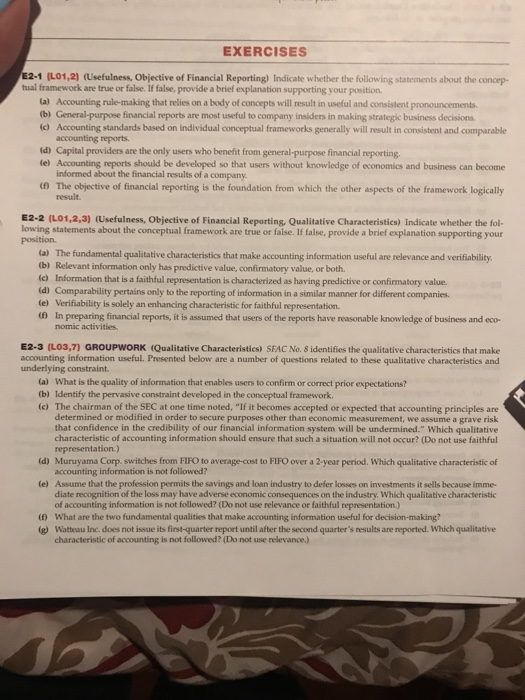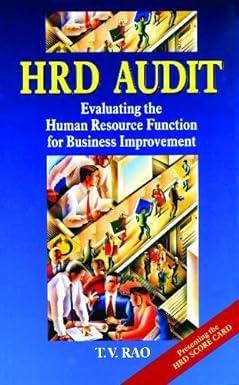EXERCISES E2-1 (L01,2) Usefulness, Objective of Financial Reporting) Indicate whether the following statements about the concep tual framework are true or false. If false, provide a brief explanation supporting your position. (a) Accounting rule-making that relies on a body of concepts will result in useful and consistent pronouncements (b) General-purpose financial reports are most useful to company insiders in making strategic business decisions d Accounting standards based on individual conceptual frameworks generally will result in consistent and comparable accounting reports. d) Capital providers are the only users who benefit from general-purpose financial reporting e) Accounting reports should be developed so that users without knowledge of economics and business can become informed about the financial results of a company (D The objective of financial reporting is the foundation from which the other aspects of the framework logically result E2-2 (L01,2,3) (Usefulness, Objective of Financial Reporting, Qualitative Characteristics) Indicate whether the fol- lowing statements about the conceptual framework are true or false. If false, provide a brief explanation supporting your (a) The fundamental qualitative characteristics that make accounting information useful are relevance and verifiabiliy (b) Relevant information only has predictive value, confirmatory value, or both. c) Information that is a faithful representation is characterized as having predictive or confirmatory value. d) Comparability pertains only to the reporting of information in a similar manner for different companies (e) Verifiability is solely an enhancing characteristic for faithful representation. (0 In preparing financial reports, it is assumed that users of the reports have reasonable knowledge of business and eco- nomic activities E2-3 (L03,7) GROUPWORK (Qualitative Characteristics) SFAC No. 8 identifies the qualitative characteristics that make accounting information useful. Presented below are a number of questions related to these qualitative characteristics and underlying constraint. (a) What is the quality of information that enables users to confirm or correct prior expectations? (b) Identify the pervasive constraint developed in the conceptual framework. (c) The chairman of the SEC at one time noted, "If it becomes accepted or expected that accounting principles are determined or modified in order to secure purposes other than economic measurement, we assume a grave risk that confidence in the credibility of our financial information system will be undermined." Which qualitative characteristic of accounting information should ensure that such a situation will not occur? (Do not use faithful representation.) (d) Muruyama Corp. switches from FIRO to average-cost to FIFO over a 2-year period. Which qualitative characteristic of accounting information is not followed? Assume that the profession permits the savings and loan industry to defer losses on investments it sells because imme- diate recognition of the loss may have adverse economic consequences on the industry. Which qualitative characteristic of accounting information is not followed? (Do not use relevance or faithful representation.) (e) (0 What are the two fundamental qualities that make accounting information useful for decision-making? (g) Watteau Inc. does not issue its first-quarter report until after the second quarter's results are reported. Which qualitative characteristic of accounting is not followed? (Do not use relevance)







